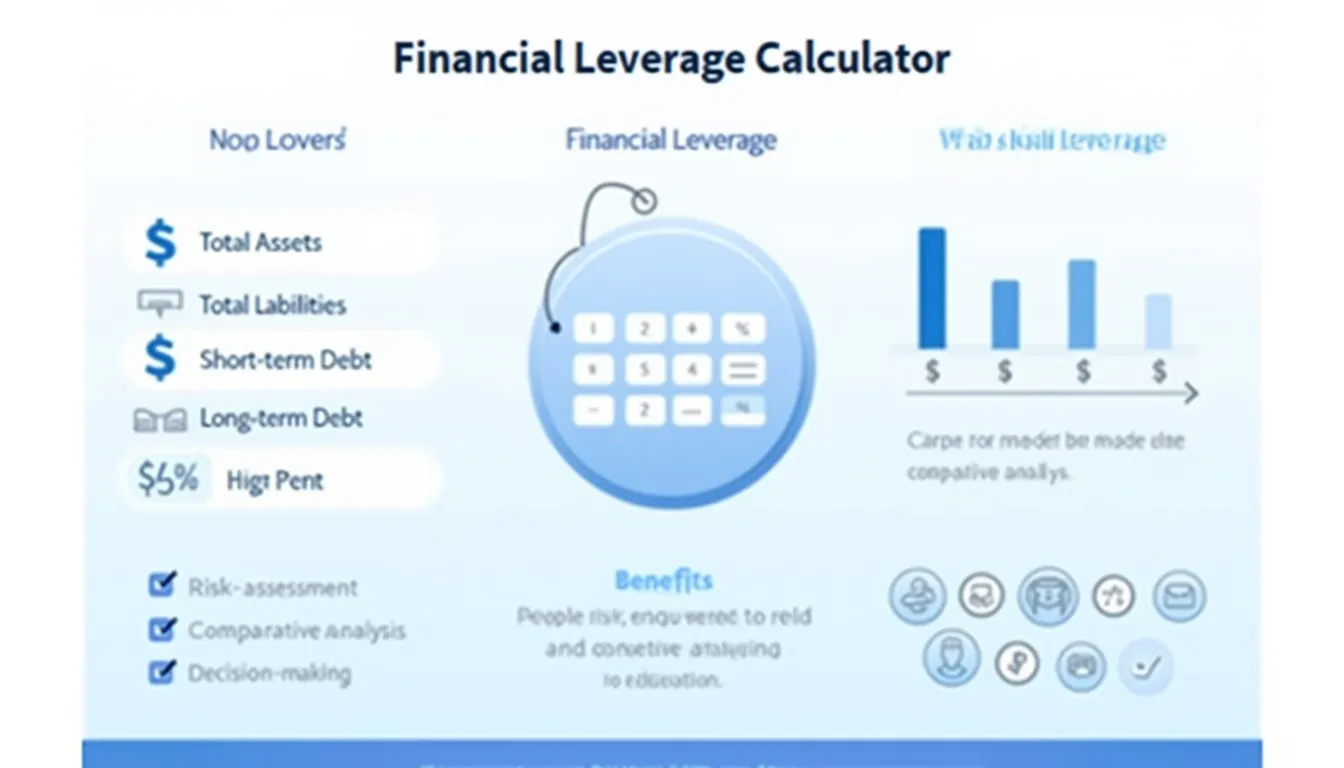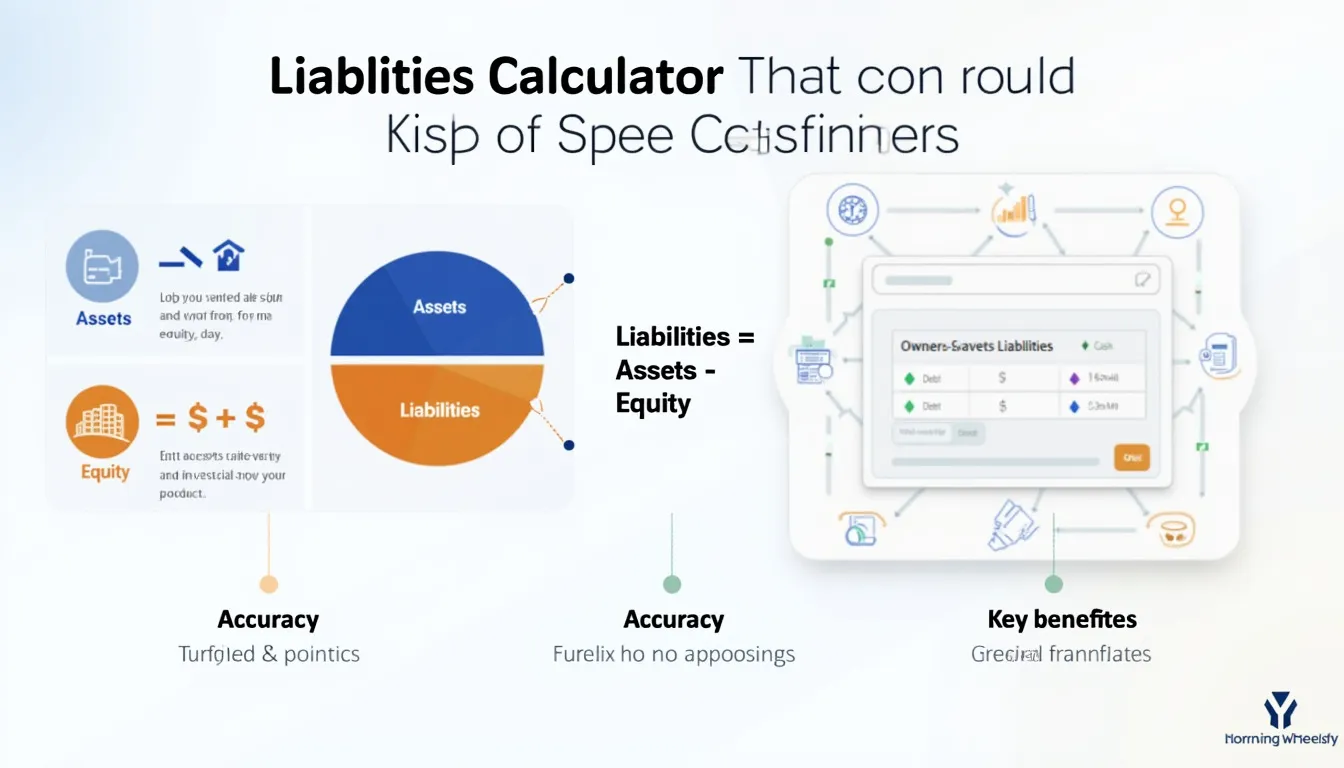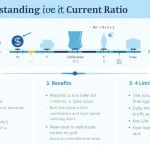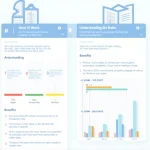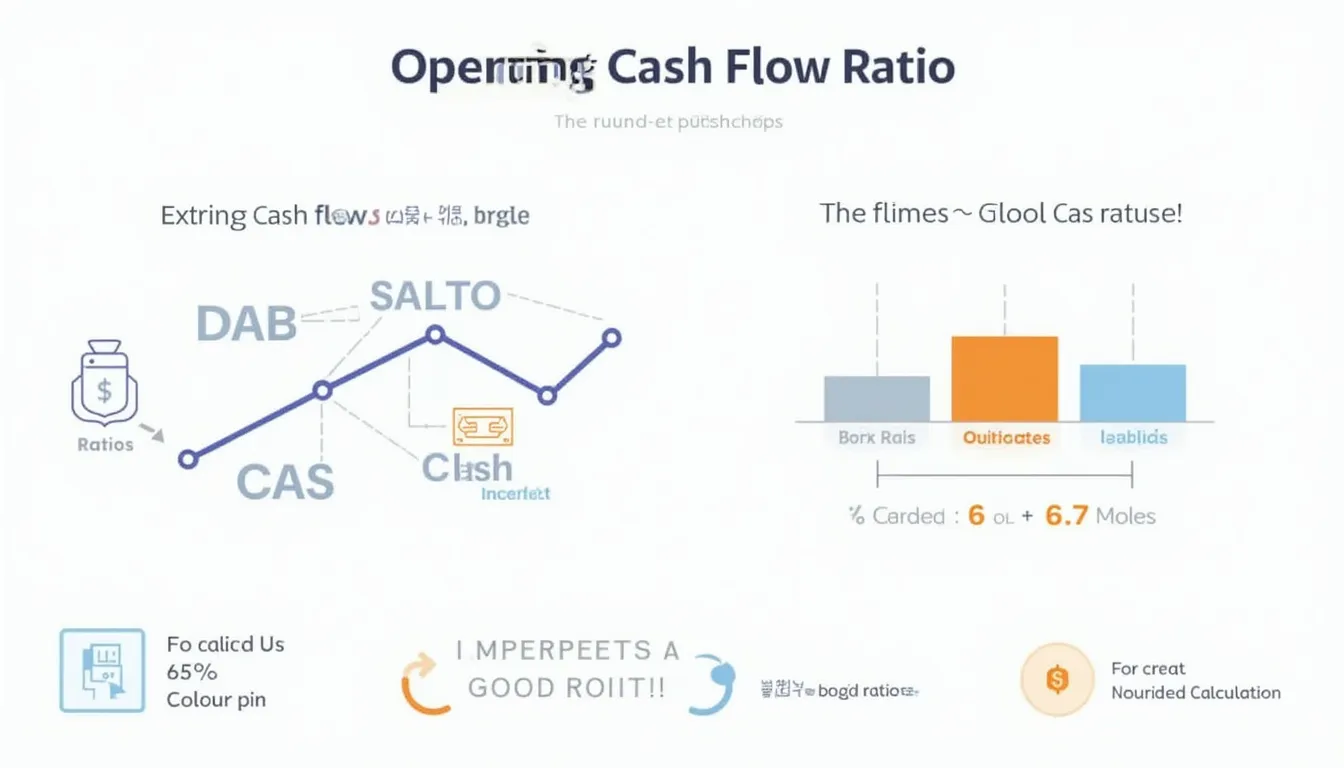Financial Leverage Calculator
Is this tool helpful?
How to use the tool
- Total Assets – Type your company’s full asset value.
Examples: 2,300,000 or 5,600,000. - Total Liabilities – Enter all obligations owed.
Examples: 1,150,000 or 2,400,000. - Short-term Debt – Debt due within 12 months.
Examples: 350,000 or 500,000. - Long-term Debt – Debt maturing after one year.
Examples: 450,000 or 1,200,000. - Press Calculate Financial Leverage to view the ratio.
Formula
$$ \text{Financial Leverage}= rac{\text{Short-term Debt}+\text{Long-term Debt}}{\text{Total Assets}-\text{Total Liabilities}} $$
Checked examples
- Example A: 2.3 M assets, 1.15 M liabilities, 0.35 M short-term, 0.45 M long-term → Equity = 1.15 M, Debt = 0.80 M, Leverage = 0.80 M / 1.15 M ≈ 0.70.
- Example B: 5.6 M assets, 2.4 M liabilities, 0.50 M short-term, 1.20 M long-term → Equity = 3.2 M, Debt = 1.70 M, Leverage ≈ 0.53.
Quick-Facts
- Average U.S. non-financial debt-to-equity: 0.64 × (Federal Reserve, 2024).
- “A 1-2 ratio suits most industries” (Investopedia, Debt-to-Equity Ratio).
- Utilities sector median sits near 1.4 × (Damodaran Data, 2024).
- Leverage above 2 × doubles bankruptcy probability (Moody’s Corporate Default Study 2023).
FAQ
What is financial leverage?
Financial leverage shows how much debt you use to fund assets versus equity, signalling risk and return potential (Investopedia, 2024).
How do I calculate it?
Add short- and long-term debt, then divide by shareholder equity, which equals assets minus liabilities (Corporate Finance Institute, Formula Guide).
What ratio is considered healthy?
Many analysts view 1-2 × as balanced; values differ by sector—tech averages 0.5 ×, utilities 1.4 × (Damodaran Data 2024).
Why does leverage increase returns?
Borrowed funds amplify earnings on equity when returns exceed borrowing costs, a “magnifier effect” noted by Brigham & Ehrhardt (2021).
Can the ratio be negative?
Yes. Negative equity (liabilities > assets) yields a negative ratio, signalling serious solvency risk (SEC Filings, Enforcement Guide).
How often should I monitor leverage?
Review each quarter or whenever material debt or equity changes occur, mirroring GAAP reporting frequency (FASB ASC 270).
Is financial leverage the same as operating leverage?
No. Operating leverage tracks fixed operating costs; financial leverage tracks financing mix (CFA Institute Curriculum 2023).
How do lenders use this ratio?
Banks set covenant limits—commonly below 2 ×—to cap borrower risk and price loans accordingly (S&P Global Ratings Methodology, 2023).
Important Disclaimer
The calculations, results, and content provided by our tools are not guaranteed to be accurate, complete, or reliable. Users are responsible for verifying and interpreting the results. Our content and tools may contain errors, biases, or inconsistencies. Do not enter personal data, sensitive information, or personally identifiable information in our web forms or tools. Such data entry violates our terms of service and may result in unauthorized disclosure to third parties. We reserve the right to save inputs and outputs from our tools for the purposes of error debugging, bias identification, and performance improvement. External companies providing AI models used in our tools may also save and process data in accordance with their own policies. By using our tools, you consent to this data collection and processing. We reserve the right to limit the usage of our tools based on current usability factors.
